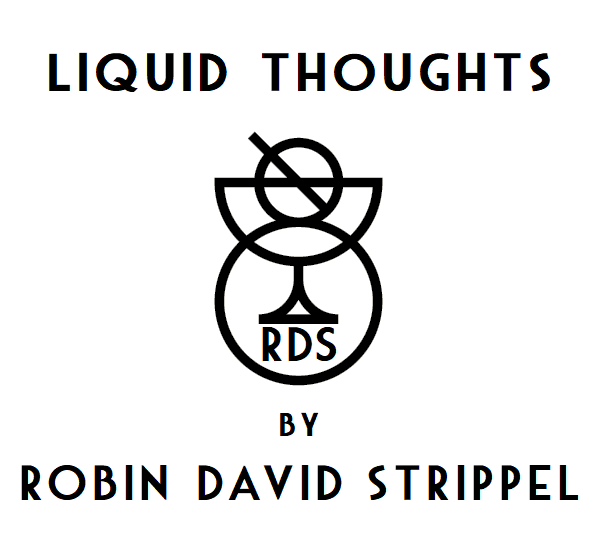Experimental Cocktail Club
Experimental Cocktail Club: London - Paris - New York - Ibiza
Romée de Goriainoff, Pierre-Charles Cros, Olivier Bon, Xavier Padavoni / 224 Pages / October 2018
Today we're reviewing another cocktail book from a specific bar, or rather several. But it all started with one of them, and this is no lightweight, but rather one of the real “OGs” of the cocktail revolution in the mid-2000s and definitely one of the most important bars in Europe at the time. We're talking about the Experimental Cocktail Club in Paris, whose success, as you can easily see from the structure of the book, led to the opening of over half a dozen bars in four cities.
The book, or rather the recipes, are also structured according to the origin of these bars, which makes perfect sense and sorts everything nicely. It means, however, that no drinks can be easily found by, e.g., base spirit or other categories (except via the index). Foremost: The book is exciting in two ways, because several of the bars, e.g., the Ballroom and the ECC in New York, are permanently closed (but there are new ones in Switzerland and Venice). Which means that this is also a bit of a relic, with recipes from closed bars. Which in turn has a certain additional appeal, but maybe that's just down to my interest in history.
We have a minimal foreword before those recipes, generally there is little to say about the texts apart from the recipes. One-page foreword, 2 small pages on the original ECC in Paris, which still exists today, only one page each on the other bars when their respective recipes start. There is not much exciting information beyond the bare essentials, and they are also a little impersonal compared to other works. They are largely written in the name of the entire founding team of four, so there is little individual personality involved. That's not a bad thing, but I would have liked a bit more interesting anecdotes or general background information.
The respective texts also mention roughly what distinguishes the respective (other) bars from the original ECC Paris, and you actually notice this a little in the drinks, even if only in individual cases. The Ballroom, for example, is more relaxed and feels like it has sweeter drinks for before or after parties — e.g., a riff on the Cosmopolitan. Other bars are slightly more experimental or edgy, Ibiza, of course, much lighter and more beach bar-oriented.
What characterizes the book across all bars, however, is the very balanced or consistent difficulty of the recipes, which I would classify as rather low to the lower range of medium difficulty. In my opinion, a conscious choice was made here to not make life too difficult for the home bartender, but still to offer almost exclusively recipes that (at least at the time of publication) had something new to offer for many amateur bartenders. Some of them are rather small riffs, some go a bit further, but always with an immediately obvious idea and structure, nothing obscure. You can usually buy everything in a normal supermarket, rarely in the usual Asian market for a small infusion and a syrup here or there. Elaborate preparations, let alone high-tech gadgets, are not expected anywhere here. The two recipes here in the review are typical examples, and we have already presented one or two drinks on the site, e.g. the amazing Winnie The Pooh.
Two of the three chapters following the recipes from their bars are also very appealing and a nice idea to put in such a book. The first is a chapter called “Friends”, which contains a dozen or so drinks from bartender friends from all over the world. “Our” (meaning German here) Joerg Meyer from Hamburg actually appears on the very first page. I probably don't need to mention which drink for Germans, but for some international readers: His Gin Basil Smash. But the chapter takes us also to Barbados and Tokyo, so it really covers the globe. This is followed by around 20-30 “Classics”, where either the specific choice of brand or the exact ratio of the ECC for those great classics is explained. And then the second chapter I mentioned, which I find exciting: vintage cocktails. In some of its bars, ECC managed and in some cases still manages to pamper spirits connoisseurs and always has something exciting to offer. Rare Japanese whiskies (as you'll soon see in our ECC Paris review) and vintage spirits and liqueurs are still available in Paris today. A handful of those special drinks are presented in this chapter, complete with the respective vintage spirits. These can be classics or signature drinks that are found in the form of spirits from the 1950s, 1970s and so on, in some ECC bars (at least back when the book was published). I like that, quite unique in a cocktail book, although of course something that amateur bartenders are less likely to actively implement.
This is followed only by the (rather short) collection of recipes for infusions and syrups, as well as the acknowledgements and a very small index, and the book comes to an end.
Conclusion:
The Experimental Cocktail Club book is a very good choice as the 2nd or 3rd book in your home bar library to expand your recipe collection. Think of books like PDT or the first Death & Co book, although it can't quite keep up with them in terms of quantity. As a very first book, you shouldn't give it as a gift or get it for yourself, as there are virtually no techniques or basic tips given. Nevertheless, the book is solidly produced, with nice photos, even if it doesn't excel in any visual category, be it photos, layout or other design aspects. However, for the €15-20 you can find it for, even advanced bartenders can pick it up without hesitation and enjoy the new recipes, which in this case are not too complicated.




